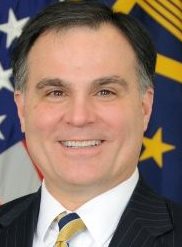The IT professionals at the Department of Defense are learning to speak the language of the warfighter.
John Zangardi, acting chief information officer of the DOD, said that one of his biggest jobs is to make sure that military personnel have the command and control assets that they need on the battlefield. That involves explaining IT systems and challenges in a way that they can understand its value and tackling cybersecurity challenges before they arise.

“Cyber is a big deal,” Zangardi said at the Adobe Digital Government Symposium on Tuesday. “I have the responsibility not to put out the welcome mat for our adversaries.”
The DOD plans to deploy Windows 10 by the end of 2017, expedite a barrier between DOD networks and the rest of the Internet, use and encourage other entities to use the Cyber Scorecard 2.0, understand the cost of the IT enterprise, and define the cyber responsibilities among the different DOD departments.
Windows 10 has fewer security vulnerabilities than the previous DOD system, but some employees were averse to the idea of learning a new system.
“Our typical response to the old system is to wait for years and beg and plead to keep the old one going,” Zangardi said.
In order to deploy the Joint Regional Security Stack, which would put an obstacle between DOD systems and the rest of the Internet environment, Zangardi said that he’s had to work around bureaucratic acquisition challenges.
“Does anybody know what a bureaucrat is?” Zangardi said. “It’s a person who says no.”
Zangardi said he plans to encourage NATO countries to use similar frameworks as the Cyber Scorecard 2.0, which includes automated reports that can give agencies that latest information about their systems.
Zangardi said that he’s been working for about two months with Adm. Michael Rogers, National Security Agency and U.S. Cyber Command head, to map out the cybersecurity responsibilities of each part of DOD.
Zangardi is also working on a new pilot for the Defense Travel System in order to modernize and make it more user-centric to serve DOD civilians and the armed forces.
“We need to give the experience that our employees have–we have to make it better,” Zangardi said.

